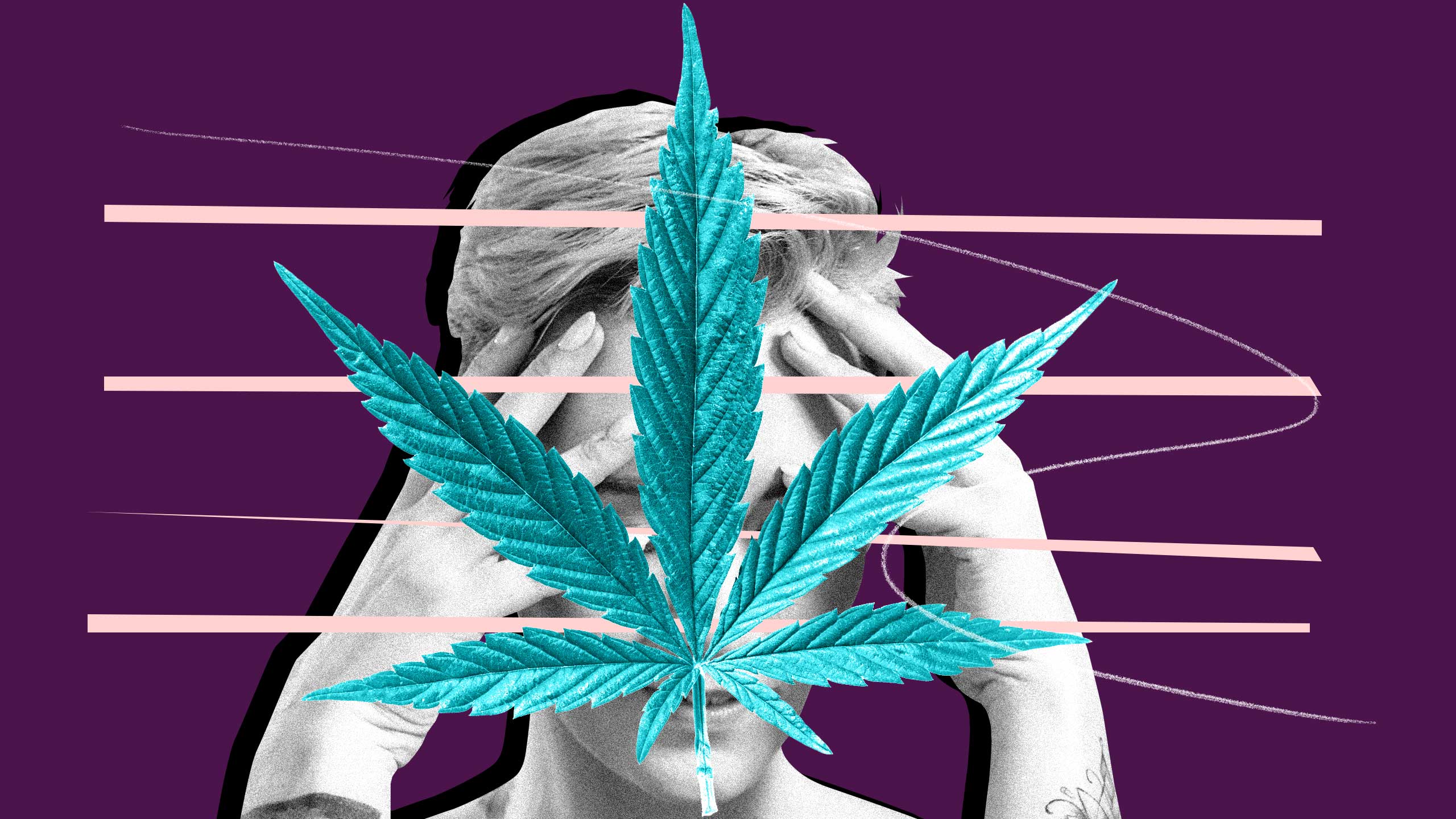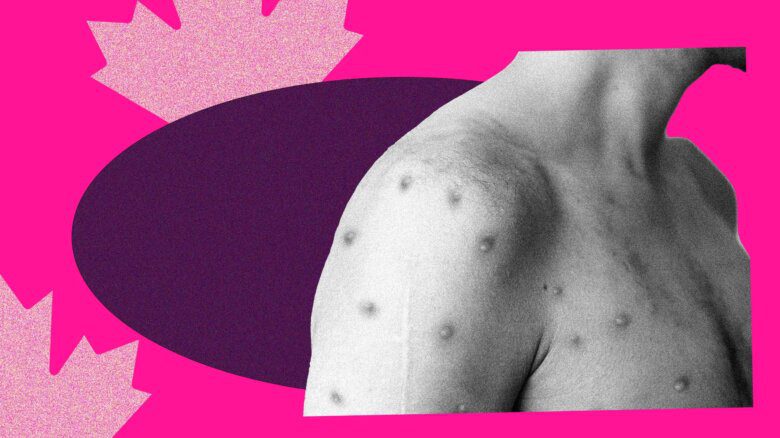Between the legalization of cannabis in late 2018 and the onset of the COVID-19 pandemic in early 2020, the amount of cannabis Canadians are using is increasing. At the same time, a greater emphasis has been put on mental health as people cope with the loss, isolation and hardship of the pandemic. Yet there are still many gaps in our knowledge of how cannabis use affects our mental health, and debate abounds over whether it is an effective coping tool or a harmful crutch.
Within the research that does exist, people from diverse communities are under-studied and under-represented, especially LGBTQ2S+ people. To better understand the unique relationship these communities have with cannabis use and mental health, the Mental Health Commission of Canada (MHCC)—in partnership with the Canadian Institute of Health Research, the Canadian Consortium for Early Intervention in Psychosis, the Schizophrenia Society of Canada Foundation and Veterans Affairs Canada—has funded a series of year-long research projects.
Xtra spoke to Mary Bartram, MHCC’s director of policy, who says 18 studies currently in the works are the final set in about 40 research projects MHCC and their partners have funded. The final set—most of which were underway as of September—are qualitative studies highlighting diverse communities, including LGBTQ2S+ populations, racialized and Indigenous people, veterans and people with existing mental health needs.
“I’m hoping we can really expand the conversation about the relationship between cannabis and mental health, so it’s not just all negative,” Bartram says. “It’s important not to close the door on the possibility of benefits, while at the same time not being naive about risks.”
While we wait for the studies’ results, here’s what you need to know about the relationship between cannabis and mental health, and the unique needs of diverse populations.
What do we know so far about the relationship between cannabis and mental health?
“We know that mental health and substance use, whether it’s cannabis or alcohol or other kinds of substances, have a lot of shared risk factors,” Bartram says. “Everything from poverty to tough experiences in childhood or adulthood, or trauma in adulthood—like post-traumatic stress disorder (PTSD)—creates that close interrelationship that means people are at higher risk.”
Many studies have documented a link between cannabis use and an increased risk of specific mental illnesses like schizophrenia and psychosis, particularly in younger people or those with a family history of psychosis—and especially when higher-potency cannabis is consumed. According to the Government of Canada’s health department, cannabis use is associated with increased risk of suicide, anxiety and depression, while longterm regular use can be negatively affect memory, concentration, intelligence and decision-making. Youth under 25 are at the highest risk of negative reactions because their brains are not yet fully developed and cannabis can impair brain development and function.
On the other hand, for many, social and recreational cannabis use can improve quality of life or help cope with stress. It can lessen anxiety, improve sleep and treat chronic pain. Cannabidiol, or CBD, is one of two main active components found in cannabis and has been successfully used to treat PTSD in veterans. Cannabis is often seen as a better alternative to other drugs because it is only mildly physically addictive with regular use and a cannabis overdose cannot be fatal.
Low risk for physical addiction and overdose aside, it’s important to remember there are other ways to determine the harm or benefits of drugs. According to the Canadian Centre on Substance Use and Addiction (CCSA), cannabis use is about twice as common in people with mental health disorders such as schizophrenia, bipolar disorder, depression, anxiety and PTSD. Whether this is just a correlation between cannabis as a coping tool or an indication of problematic use is unclear and research as of yet is inconclusive. One in three users will develop a problematic relationship with cannabis and 9 percent will develop an addiction—this increases to 17 percent in people who started using as teenagers and 25 to 50 percent if use is daily.
How have legalization and COVID-19 affected how much and why people are using cannabis?
Cannabis was legalized in Canada in October 2018, 17 months before Ontario’s first pandemic lockdowns. When studying why cannabis use has increased overall, the factors of legalization and the pandemic are closely intertwined. “You can’t really separate them anymore,” Bartram says. Multiple studies show overall cannabis use trending upward, with a Statistics Canada study early in the pandemic citing “boredom” as one of the main reasons for the increase.
But there are deeper mental health reasons driving the increase, too. “People are saying they are having trouble sleeping, they’re worried about the future, they don’t feel helpful—that’s been a steady thing across the last six to 12 months,” Bartram adds. She says that among those whose use has increased, “a lot of people will be fine but some may run into longer-term problems.”
What does problematic use look like?
“Problematic use is when [cannabis] starts to create problems in work or your school, your home life or your personal well-being,” Bartram says. While problematic use varies from individual to individual, there are things to watch out for, like wanting to cut back but being unable to. Bartram suggests familiarizing yourself with a resource called “Canada’s Lower Risk Cannabis Use Guidelines.” Some suggestions from the guidelines include using cannabis products with lower THC or higher CBD content, choosing non-smoking methods such as edibles or vaping to protect your lungs and using less frequently.
If you are concerned about your own cannabis use, consider talking about it with a friend or a professional you trust. If you are concerned about someone else’s cannabis use, ensure you approach the conversation in a non-judgmental manner. Keep in mind that many people are not used to talking openly or honestly about cannabis use, especially since legalization is still recent. There are no universally agreed upon healthy or problematic levels of consumption. Bartram advises an open-minded and patient approach to these conversations, and a willingness to listen to the individual’s unique experience with cannabis.
What are the potential benefits?
“A lot of people use cannabis to improve their quality of life and don’t run into any problems—something we want to understand better,” Bartram says. A lot of conversations about cannabis use are geared toward its possible negative influence on users, “but there is also evidence around potential therapeutic benefits of cannabis for things like anxiety,” she says. It is known to help with symptoms of PTSD, which affects communities of people like LGBTQ2S+ folks at higher rates. It can also help people with chronic pain conditions, and can often be a safer relaxation aid than alcohol or pills.
For diverse communities, cannabis can be a tool for many of the unique health challenges they face. Often the medical system fails to adequately care for LGBTQ2S+ people, for example, and cannabis can be a “helpful tool to continue to try and maintain physical and mental health in a world that does not always protect them,” Chicago writer C. Merten notes on online cannabis resource Leafly. Some people use it after gender-affirming surgeries to provide pain relief and reduce inflammation. It can help treat the symptoms of some other medical conditions like cancer, or provide relief for some mental health conditions including depression, anxiety or PTSD.
Why is it so important to expand research to diverse populations specifically?
“Cannabis and mental health is not a one-size-fits-all relationship,” says Bartram. “People bring different cultures and different perspectives to using cannabis in a way that has relevance for mental health.”
To better understand this relationship, the current studies are mainly qualitative, aiming to understand individuals’ experiences with mental health and cannabis by listening to them reflect and speak for themselves. Bartram says she expects to see higher correlation between cannabis use and LGBTQ2S+ populations, who are particularly hard-hit by recent social isolation and often rely on chosen family and community networks. Additionally, LGBTQ2S+ communities often struggle to access health care geared toward them—or at all—and may turn to self-medicating as a way to cope and seek relief. “Cannabis may be a tool used to help people cope with rough situations,” Bartram says.
Bartram says because of the limited time span of this current research, we should see the results of these studies quickly. “We have some resources to help mobilize the knowledge from our findings, to get them into the public domain and the different communities that these projects are about,” Bartram says. The MHCC’s role is to gather all the results and share them with the appropriate people and communities, which will bring valuable insight and tools to how we collectively and individually approach cannabis use. “We are excited to have a better understanding of using cannabis in a way that has relevance for mental health,” Bartram says.


 Why you can trust Xtra
Why you can trust Xtra


